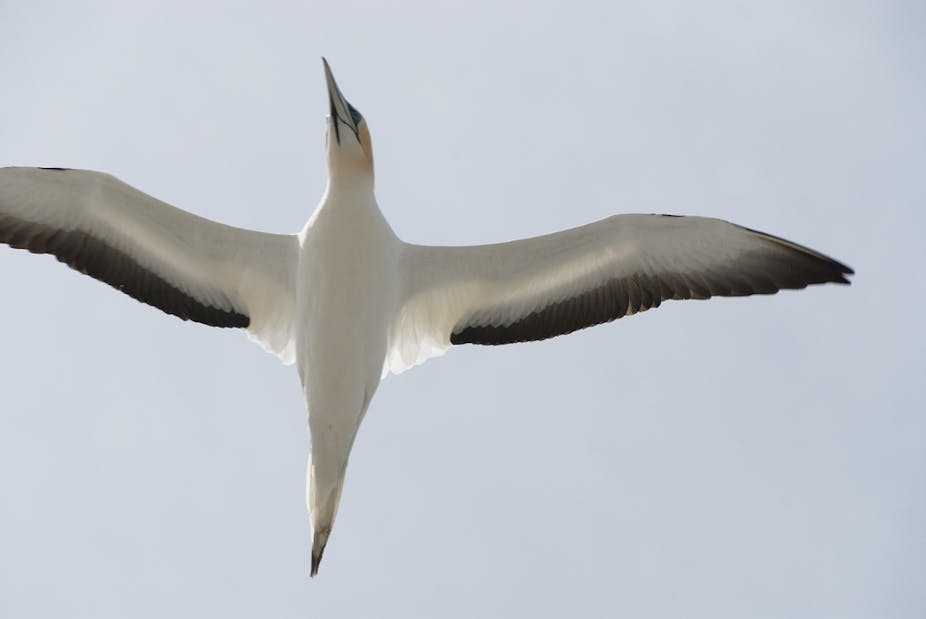Here’s an activity for you this weekend: either staying at home or heading bush, count the number and type of birds you see.
It’s all part of BirdLife Australia’s Challenge Count, an annual event that’s been running for over 30 years. The rules are simple: two people need to see a bird, or three need to hear for it to be counted.
The information collected can later be used to inform researchers and government about which birds live where in our urban environments across Australia.
A brief history of bird-watching
The hobby of bird-watching, or birding as it is also known, evolved largely as a response to declining bird populations as a result of hunting and egg collecting.
Enthusiasts switched to collecting species names on a list instead of the birds themselves. Increasingly, these lists are becoming photographic, with some birding experts claiming that digital SLR photography will save the hobby from extinction.

Bird counts have been popular in the UK and USA for over a century, with hundreds of thousands of people participating.
Australia is still behind. It’s not just a matter of smaller population (as discussed in Sean Dooley’s Anoraks to Zitting Cisticolas). The proportion of birders in Australia is lower, as shown by membership of bird groups compared to the Royal Society for the Protection of Birds in the UK and the Audubon Society in the US.
As an example, the RSPB boasts a million members (1.8% of Britain’s population). Meanwhile, our leading bird organisation (BirdLife Australia) currently has 10,000 members (0.05% of the population). Lots of room to grow our birding community!
The reasons for this contrast are varied and poorly documented but we hope events like the Challenge Count can increase interest.

Australia, love your birds
Australia is home to about 700 bird species, almost half of which are endemic – that is, they are found nowhere else in the world.
Did you know that Australia has the highest diversity of honeyeaters globally? Similarly, more than 80% of our parrots are found only in Australia. This is the highest rate of parrot endemism for any region.
Domestic and international birders know very well the unique bird life to be seen across Australia. However, many Australians are yet to discover the amazing world of birding here.
In case you need motivation, here are six reasons to get out and see Australia’s avifauna.
Dinosaur birds
The Southern Cassowary (Casuarius casuarius) is a resident of North Queensland and New Guinea. Large, flightless and prehistoric in appearance, it plays a critical role in rainforest ecosystems.
Often termed a “keystone” species, the Southern Cassowary is responsible for the dispersal of many large-fruited plants in the Wet Tropics World Heritage Area. Car strikes and habitat loss due to severe cyclones are key threats to these birds.

Star performers
Albert’s Lyrebird (Menura alberti) is next. While the Superb Lyrebird (Menura novaehollandiae) gets the lion’s share of attention in the media, its northern cousin is often overlooked. Currently listed as Near Threatened on the IUCN Red List of Threatened Species, Albert’s Lyrebird is a master of mimicry and dance like the Superb Lyrebird, but arguably more attractive to the eye with its chestnut colouration.
The courting antics of these birds have to be heard and seen to be believed and the patient birdwatcher will be rewarded with these amazing sights and sounds in the winter breeding season.
Forest duets
If you have taken a walk in many Australian forests you may have heard the distinct whip crack call of a male and female Whipbird duet (Eastern Whipbird Psophodes olivaceus or Western Whipbird Psophodes nigrogularis that is). The first part of the call is the male with the second part the response of a female nearby.
Sometimes the poor guy’s call goes unanswered. That unmistakable whip crack makes many stop mid-track, but getting a visual fix on them hopping through the undergrowth can be more challenging.
Olympic divers
Not many bird life spectacles can beat watching a group of Australasian Gannets (Morus serrator) feeding along our coastal waters. These fearless birds dive head-first into schools of fish, reaching speeds of 100 km per hour and making most spectators gasp!
As the name implies, Australia shares this species with a neighbour (New Zealand) but are often seen at any number of Australian coastal destinations.
Crying child, or cat?
Perhaps the weirdest call of all Australian birds belongs to the Green Catbird (Ailuroedus crassirostris). It’s a tricky one to get a good look at, as its mottled green plumage is perfect camouflage among forest habitats.
The call of this bird sounds like a cross between a child crying and a cat meowing. The first time you hear it you can’t help but think “what on Earth is happening to that child?” Little do you know, the sound is being made by a stunning green bird closely related to the boudoir-building bowerbirds.
Bower builders
Speaking of bowerbirds, the male Western Bowerbird (Chlamydera guttata) puts on quite the show. Complete with dancing and mimicry, he performs in his architectural avenue bower in the hope of impressing very choosy females.
The bower, a true work of art, comprises white and green decorations including bones, shells and whatever these opportunistic interior decorators can get their beaks around. However, male bowerbirds face constant vandalism by nearby competitors.
So these are six of the quirkiest birds you need to get out and discover across this glorious continent. As any keen birder will testify to, once you start watching birds there won’t be any turning back, but you won’t regret it for a minute!

